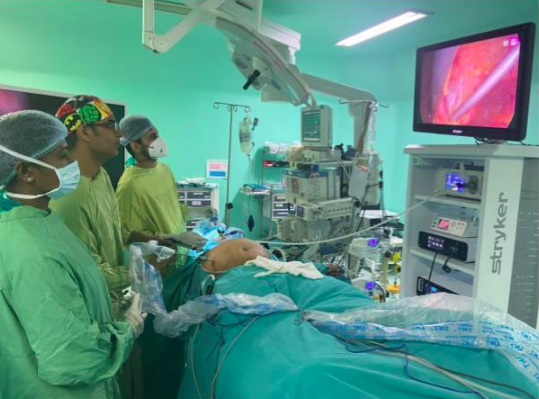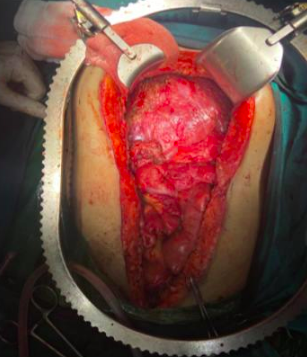Minimally invasive surgery refers to any surgical procedure that is performed through tiny incisions instead of a large opening. This technique allows the surgeon to see inside the patient’s body and operate through a much smaller incision than would otherwise be required for traditional open surgery.
It is also known by common terms like Laparoscopic surgery, or “keyhole” surgery.

In a Minimally invasive surgery, the surgeon reaches internal organs through very small incisions or “holes”. A long, thin tube fixed with a video camera known as ‘Laproscope’ is inserted into one of the incisions. Images from the laparoscope are sent to monitors in the operating room so that the surgeon can view clear, magnified pictures of the area needing surgery. Through the other such small incisions, surgical instruments are inserted, allowing the surgeon to perform the surgery while viewing the organ on a computer monitor


Compared with the traditional open method of surgery, Minimally invasive surgery may take a longer duration however, the advantages significantly outweigh. The main advantage of this type of surgery is less pain, low risk of infection, short hospital stay, less scarring, reduced blood loss, and a quicker recovery for many people.

Initially, Minimally invasive surgery was used for simple procedures like gall stones, hernias, appendectomy, and anti-reflux surgery. Now with the improvements in technique and skill of surgeons and advances in the quality of cameras and other instruments, it is increasingly being utilized to treat more complex diseases like cancer.
The use of MIS has become the standard of care in the treatment of colorectal and esophageal cancer in many centers. Some highly specialized centers are offering minimally invasive surgery for the management of pancreatic and liver tumors, gastric cancers, and other complex GI procedures.



